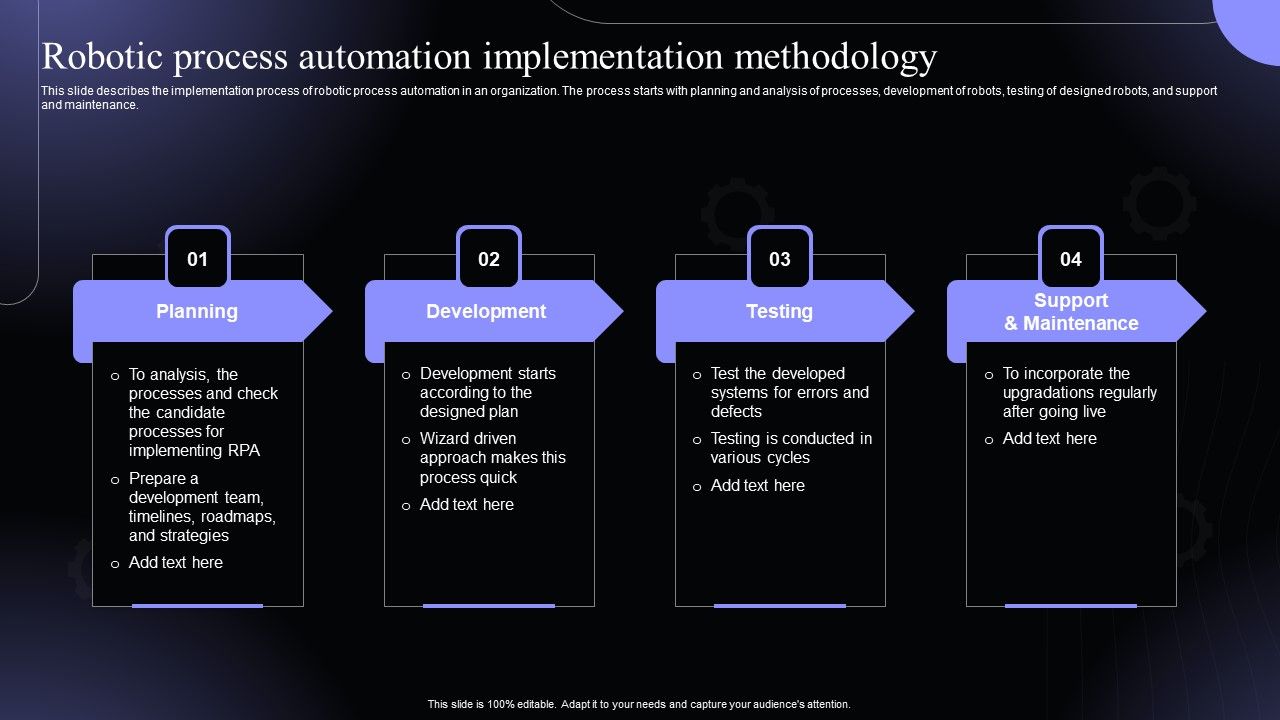
Absolutely, here’s the article without displaying the title but covering Robotic Process Automation Implementation:
Understanding Robotic Process Automation (RPA)
Robotic Process Automation (RPA) revolutionizes workflows by deploying software robots to automate repetitive tasks, reducing human intervention, and enhancing efficiency.
Assessing Business Processes for RPA Suitability
Not all processes are suitable for RPA. Identifying tasks that are rule-based, repetitive, and high in volume is crucial. An initial assessment helps determine the feasibility and potential ROI of RPA implementation.
Selecting the Right RPA Tools and Platforms
Choosing the appropriate RPA tools and platforms is a pivotal decision. Factors such as scalability, integration capabilities, security features, and ease of implementation play a significant role in the selection process.
Building a Strategic Implementation Plan
A well-structured implementation plan ensures a smooth integration of RPA into existing workflows. This includes setting clear objectives, defining timelines, and allocating resources effectively.
Collaboration between Humans and Robots
RPA isn’t about replacing humans but augmenting their capabilities. Collaboration between human workers and software robots optimizes productivity, allowing each to focus on tasks aligned with their strengths.
Testing and Validation Processes
Thorough testing and validation are critical before deploying RPA at scale. This phase involves testing robots in simulated environments to ensure accuracy, reliability, and compliance with business rules.
Security and Compliance Considerations
Ensuring robust security measures and compliance with industry regulations is non-negotiable. RPA implementation must adhere to data protection standards and ensure the safety of sensitive information.
Continuous Monitoring and Optimization
Post-implementation, continuous monitoring is essential to identify bottlenecks and areas for improvement. Optimizing RPA workflows enhances efficiency and maximizes the return on investment.
Employee Training and Change Management
Effective change management is vital when integrating RPA. Providing adequate training and support to employees fosters acceptance and empowers them to adapt to the new automated processes.
Scalability and Future Expansion
Scalability is a key factor in RPA success. As businesses evolve, the RPA infrastructure should be adaptable and scalable to accommodate changing needs and future expansions.
To delve deeper into Robotic Process Automation Implementation strategies, visit pudacanmanel.com for comprehensive insights and effective deployment approaches.
Feel free to utilize this content as needed!
